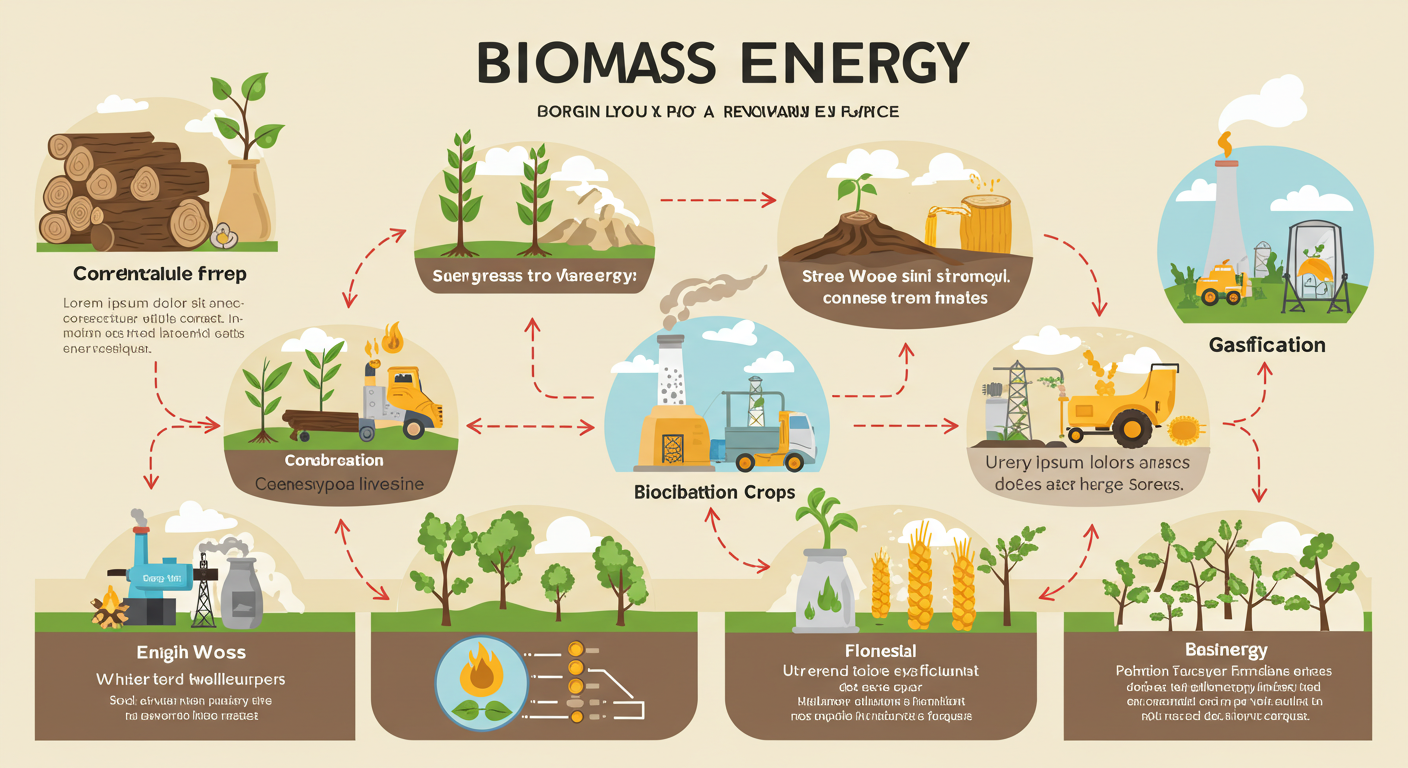Understanding Location-Based Marketing
Location-based marketing is a strategic approach that leverages a consumer’s geographic location to deliver tailored advertisements and promotions. This method empowers businesses to connect with potential customers based on their physical proximity, ultimately enhancing customer engagement and sales conversions. By utilizing various technologies and platforms, such as GPS, mobile applications, and geofencing, farm stands and market stalls can effectively target local consumers who are most likely to make a purchase.
One of the primary technologies employed in location-based marketing is GPS, which allows businesses to track and determine the exact locations of users’ mobile devices. Through targeted mobile applications, such as those developed for specific farm stands, marketers can push notifications and alerts to users when they are near the market stall. For instance, if a consumer is within a defined distance, they might receive an instant alert about a special promotion or a new product available at the stall.
Geofencing also plays a vital role in location-based marketing. This technology establishes a virtual boundary around a specific geographic area. When a potential customer enters this zone, they can receive targeted messages or advertisements. For farm stands, implementing geofencing can help create expectations of immediate and relevant offers, attracting nearby consumers who may not have been aware of the stand’s offerings.
Furthermore, social media platforms increasingly incorporate location-based elements, allowing users to discover nearby businesses. Utilizing these platforms enables market stalls to craft personalized marketing campaigns that resonate with local audiences. By understanding the advantages of location-based marketing and integrating its core technologies, farmers can optimize their outreach efforts and enhance foot traffic at their stands.
The Importance of Local Customers
Attracting nearby customers is essential for the success of farm stands and market stalls. These local patronage dynamics directly influence foot traffic, sales conversions, and community solidarity. A farm stand that cultivates a strong local customer base often experiences increased visibility and engagement within its community, forming the backbone of a sustainable business model.
One of the key benefits of local customers is the significant boost in foot traffic. According to a study conducted by the American Farm Bureau Federation, local consumers are more likely to visit farms and market stalls that are easily accessible to them. This increased foot traffic not only enhances visibility but also creates opportunities for word-of-mouth referrals. When local customers have a positive experience, they are more likely to share it with friends and family, thus attracting even more visitors to the stand.
Moreover, local customers typically exhibit higher sales conversions. Oftentimes, individuals who frequent nearby markets are prepared to make impulse purchases and support in-season produce. This trend is reinforced by research from the National Retail Federation, which indicates that customers favor local shopping due to perceived value and the desire to bolster local economies. When farm stands seize the opportunity to market directly to their local communities, they effectively increase not just sales but also customer loyalty.
Additionally, community support thrives when farm stands connect with local customers. By establishing strong relationships with their community, these businesses gain a dedicated customer base that values the importance of local sourcing. Community engagement can lead to collaborative opportunities, including partnerships and events that further enhance visibility and trust. In an age where consumers are increasingly drawn to sustainable practices, local patronage becomes a competitive advantage for farm stands and market stalls, enabling them to thrive while nurturing their local environment.
Setting Up Your Location-Based Marketing Strategy
Developing an effective location-based marketing strategy is essential for farm stands and market stalls aiming to attract nearby customers. The first step in crafting this strategy is identifying your target demographics. This involves understanding who your ideal customers are, including their age, interests, and buying behaviors. For example, are you targeting health-conscious individuals seeking organic produce, families looking for fresh local food, or tourists interested in a unique farm experience? Analyzing your community and existing customer data can guide this process.
Once your target audience is established, the next step is to set clear marketing goals. Specific, measurable objectives will provide direction for your efforts. Goals may range from increasing foot traffic during peak season to expanding your social media followers within the local community. It is crucial that these objectives align with your overall business strategy, ensuring a cohesive approach to customer engagement.
The choice of tools and platforms to implement your location-based marketing strategy is also critical. Digital platforms such as Google My Business, social media, and location-specific advertising can significantly enhance your visibility. An effective approach may include utilizing geofencing technology to send targeted promotions or notifications to potential customers when they are within a certain radius of your farm stand. Additionally, consider engaging with local influencers or community groups to widen your reach.
Lastly, integrating local attractions and events into your marketing efforts can significantly boost engagement. Collaborating with nearby businesses, participating in community fairs, or hosting farm tours can create mutually beneficial relationships that draw more visitors to your stall. By aligning your marketing initiatives with local happenings, you can foster a sense of community and encourage nearby customers to support your farm stand.
Utilizing Geofencing to Drive Traffic
Geofencing is an innovative technology that leverages GPS or RFID to create a virtual perimeter around a physical location. This digital boundary allows businesses such as farm stands and market stalls to send targeted messages and offers to potential customers who are within proximity of their premises. When a consumer enters the defined geofence, a notification can be triggered, prompting them to visit your location. This mechanism not only enhances customer engagement but also drives foot traffic effectively.
Setting up a geofence involves specifying geographical coordinates to define the desired perimeter around your farm stand or market stall. Many platforms provide user-friendly interfaces, making it simple to establish zones of varying sizes. For instance, a smaller radius may focus on immediate visitors, while a larger perimeter could capture customers further away who may still consider making the trip. Once the geofence is in place, you can design customized messages or offers tailored to your audience. These could range from special discounts to event announcements and seasonal promotions that resonate with local consumers.
To implement geofencing effectively, it is crucial to curate appealing offers that incentivize visits. Consider what might attract nearby customers – this could be a limited-time discount on fresh produce or a complimentary sample of seasonal products. Additionally, monitoring the performance of your geofencing campaigns through analytics tools can provide insights into customer behavior and preferences, allowing for continual refinement of your marketing strategy. By tailoring your messages based on data gathered, you can better connect with your audience while maximizing the impact of your location-based marketing efforts.
Leveraging Social Media for Local Reach
Social media has become an integral component of location-based marketing, presenting unique opportunities for farm stands and market stalls to engage with potential customers in their vicinity. Platforms such as Facebook, Instagram, and Twitter allow businesses to target local audiences effectively, enhancing visibility and foot traffic. By utilizing the advertising capabilities offered by these platforms, farm vendors can create targeted ads that reach users based on their geographic location, ensuring that promotions are seen by the right audience at the right time.
One of the most effective ways to connect with nearby customers is through the use of location tags in posts. By tagging your farm stand’s geographic location, you can make it easier for local residents to discover your offerings while browsing their social media feeds. Additionally, including local hashtags can significantly increase the likelihood of being found by users interested in nearby food markets or fresh produce. Examples include hashtags such as #FarmersMarket followed by your city’s name, or #LocalEats to attract attention from those specifically searching for local agricultural products.
Creating engaging content tailored for social media is also essential. High-quality images of fresh produce, behind-the-scenes footage of market preparations, or live videos showcasing special events can capture the interest of followers and promote a sense of community. Running promotional campaigns, such as discounts for followers who check in at your stand or exclusive offers for those who share posts about your business, can further enhance engagement. Utilizing contests that encourage user participation can also drive local traffic to your stand while building a loyal customer base. Emphasizing local connection through social media not only fosters community relationships but also drives sales and boosts brand recognition.
Creating Compelling Offers to Attract Customers
Attracting nearby customers to your farm stand or market stall can be significantly enhanced through the creation of compelling offers. The key to successful promotions lies in understanding your target audience and offering incentives that resonate with their needs and preferences. One effective approach is to implement discounts, which can drive immediate traffic to your stand. For example, a limited-time discount can create a sense of urgency and encourage spontaneous visits from local shoppers.
Combo deals also present a valuable opportunity to boost sales. Packaging together complementary products, such as fresh produce with artisanal goods, not only provides greater value to the customer but also promotes cross-selling opportunities. Customers appreciate the perceived savings, and this strategy can increase the average transaction value while simultaneously enticing more patrons to explore your offerings.
Seasonal offers are another effective tool in your marketing arsenal. By aligning promotions with seasonal events or local holidays, you can tap into the natural flow of consumer spending. For instance, offering special bundles for harvest festivals or holiday-themed products can significantly enhance your visibility and draw in customers looking to celebrate occasions with your goods. Timing is key; it is essential to plan promotions well in advance and ensure they are communicated effectively through various channels.
Marketing these compelling offers plays a crucial role in their success. Utilize social media platforms, local advertising, and community bulletins to spread the word about your promotions. Additionally, ensure that your farm stand or market stall is clearly marked and visible, drawing in foot traffic from nearby areas. Keep in mind to reiterate the value of your offerings through engaging signage at your location. Ultimately, by implementing thoughtfully crafted promotions, you can entice nearby customers effectively and enhance your sales ventures.
Building Partnerships with Local Influencers
In the realm of location-based marketing, collaborating with local influencers or community figures can serve as a potent strategy to enhance visibility and credibility for your farm stand or market stall. Such partnerships enable your business to tap into established audiences that have trusting relationships with their followers, thereby increasing your reach and attracting nearby customers. The first step in identifying suitable influencers is to assess their relevance to your niche. Look for individuals who promote sustainable practices, healthy eating, or local agriculture, as their values are likely to resonate with your target audience.
Once you have a list of potential influencers, the approach to outreach should be both friendly and professional. Begin by engaging with their content on social media platforms—like, comment, and share their posts to foster a sense of connection. Following this, consider sending a direct message or email that introduces your farm stand or market stall, highlighting mutual benefits and potential collaboration ideas. Be clear about what you can offer them in return, whether it’s free samples of your products, a sponsorship, or a shout-out across your own channels.
Joint promotion ideas can further enhance the collaboration. Hosting influencer-led events at your farm stand, such as cooking classes, farm tours, or product tastings, can generate buzz and draw in crowds. Additionally, creating exclusive promotions, like discount codes available exclusively through the influencer, gives followers an attractive incentive to visit your stall. Furthermore, utilizing social media giveaways can amplify outreach, encouraging participants to check out your offerings in person. Such strategies not only boost foot traffic but also foster a community-oriented atmosphere that will keep customers returning.
Measuring the Success of Your Location-Based Marketing Strategy
When implementing location-based marketing initiatives for your farm stand or market stall, measuring the success of these strategies is vital to understand their effectiveness and optimize future campaigns. A critical aspect of this measurement involves tracking key performance indicators (KPIs) that can provide comprehensive insights into customer interactions and sales performance.
One of the primary KPIs to consider is foot traffic. By monitoring the number of visitors to your stand, you can gauge the impact of your marketing efforts. Utilizing tools such as Google Analytics or various foot traffic analytics software can enable you to analyze visitor trends over time. Understanding when and why customers visit can reveal valuable patterns in consumer behavior.
Customer engagement metrics are also essential in evaluating the success of your location-based marketing. This can encompass various interactions, from social media engagements to inquiries made during visits. Tracking responses to promotions or incentives, such as discounts offered to nearby customers, offers further insight regarding how effectively your messaging resonates with your audience.
Conversion rates provide another layer of analysis, revealing how many visitors to your farm stand or market stall actually make a purchase. This metric can be assessed using point-of-sale systems that record sales data, helping you identify which products or marketing strategies drive conversions. Additionally, observing the average transaction values can help you understand purchasing behavior.
Finally, an overall increase in sales will indicate the effectiveness of your marketing strategy. Regularly reviewing sales reports will enable you to correlate strategies—such as promotional offers—to changes in sales performance. Tools like customer relationship management (CRM) systems can facilitate tracking these metrics over time.
In conclusion, employing a combination of foot traffic measurements, customer engagement, conversion rates, and sales data can provide a holistic view of the effectiveness of your location-based marketing initiatives. Utilizing appropriate software and tools tailored to measure these KPIs will help ensure your strategies lead to desirable outcomes. By continuously analyzing these metrics, you can refine your approach and better attract nearby customers to your farm stand or market stall.
Adapting to Customer Feedback and Market Trends
In today’s rapidly evolving marketplace, the ability to adapt to customer feedback and emerging trends is crucial for businesses, including farm stands and market stalls. Location-based marketing, which utilizes geographic data to engage potential customers in close proximity, thrives on understanding consumer preferences and behaviors. Retailers can effectively capture and leverage this information to make informed decisions that resonate with their target audience.
Collecting customer feedback can be accomplished through various methods, including surveys, social media interactions, and direct communication at the point of sale. Implementing online platforms for feedback collection allows businesses to reach customers beyond the immediate physical context of the farm stand. Analyses of reviews and comments on digital platforms can provide valuable insights into what products or services appeal to customers, what aspects of their experience need enhancement, and the overall sentiment of the consumer base.
Additionally, tracking market trends involves observing shifts in consumer behavior, preferences related to sustainability, local sourcing, or health consciousness, and competitors’ movements. Farmers and vendors should keep an eye on emerging trends in the food and agriculture sector, such as the growing demand for organic produce or the popularity of farm-to-table initiatives. Utilizing these insights, businesses can tailor their marketing strategies to highlight offerings that align with current market desires.
Adapting marketing strategies in response to customer feedback and market trends not only enhances customer satisfaction but also fosters loyalty. By being proactive rather than reactive, farm stands can adjust their product offerings, marketing tactics, and promotional campaigns, ensuring that their approach is relevant to the needs of nearby customers. Ultimately, this responsiveness empowers businesses to maintain a competitive edge in their locality while reinforcing their brand identity as attuned to consumer demands.





